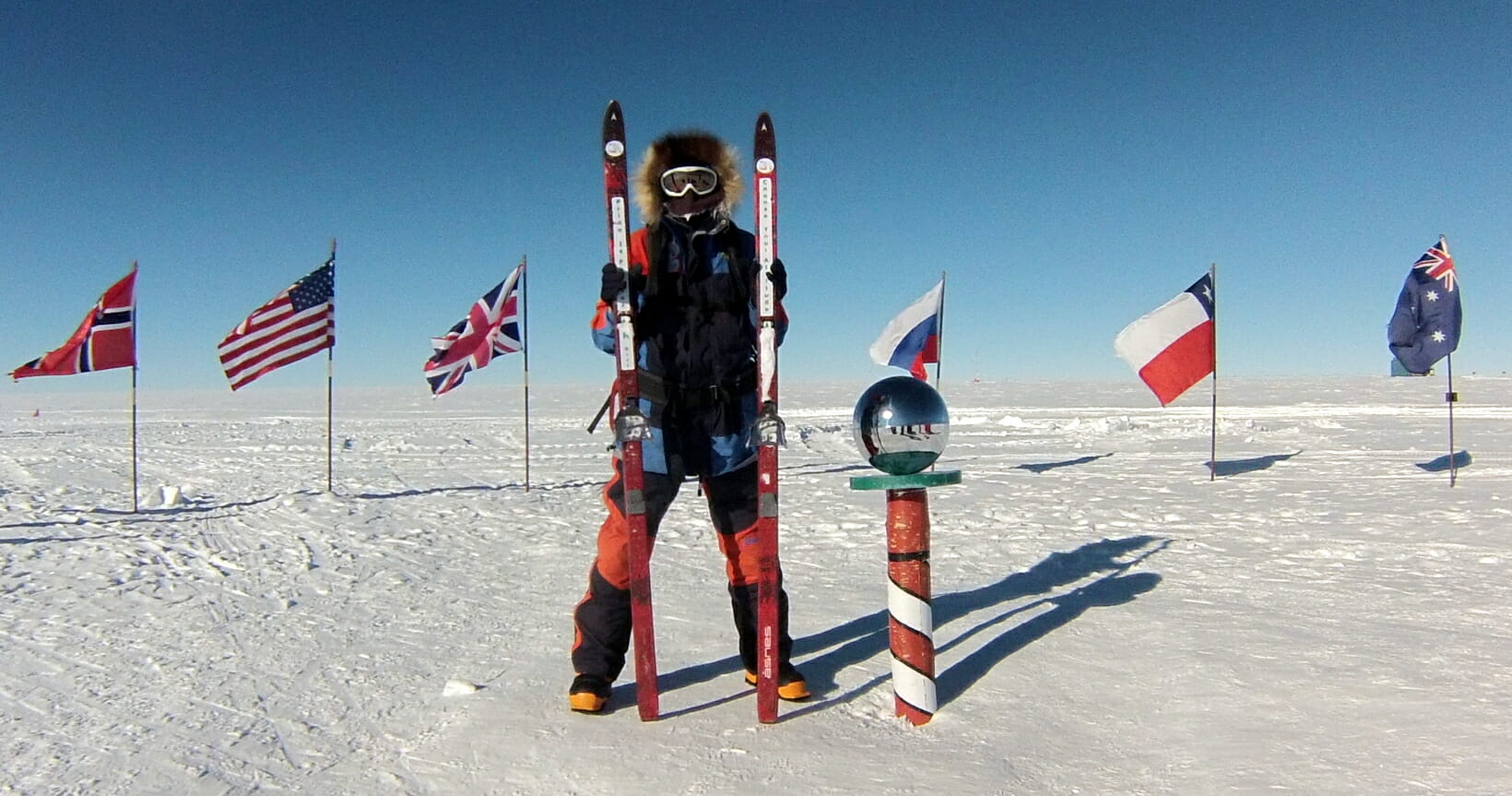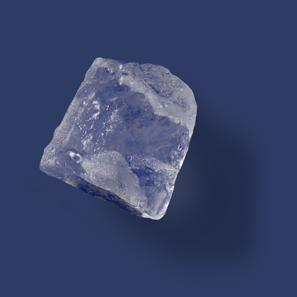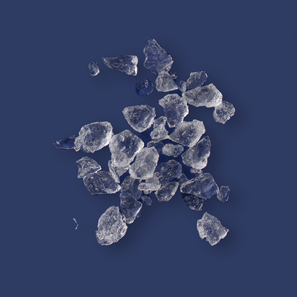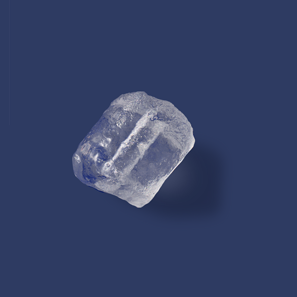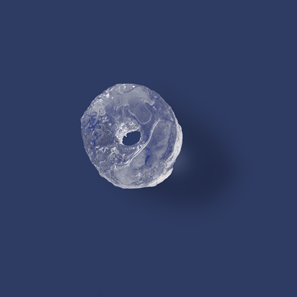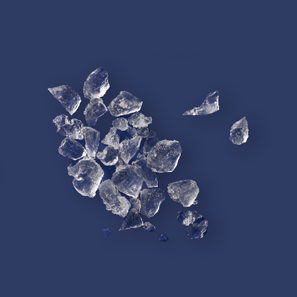We are delighted to introduce to you Paula Reid, the 3rd British and 14th International Woman to Ski Full Distance to the South Pole (Messner route). We first met Paula at an event…she surprised us with a gift like no other, a piece of ice from her breath-taking adventure. Her story is truly mesmerizing, which is why we’re ecstatic about the opportunity to feature Paula on our blog and ask her about every detail of her journey.
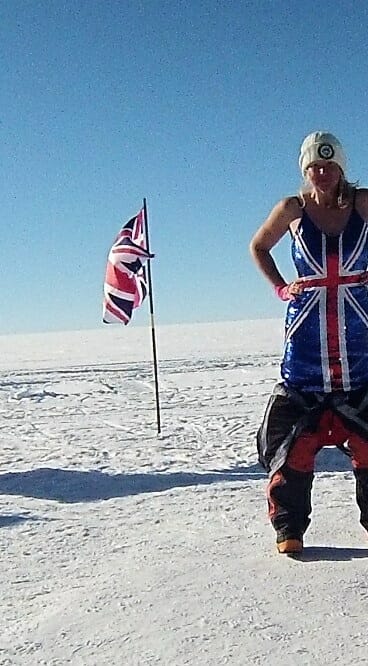
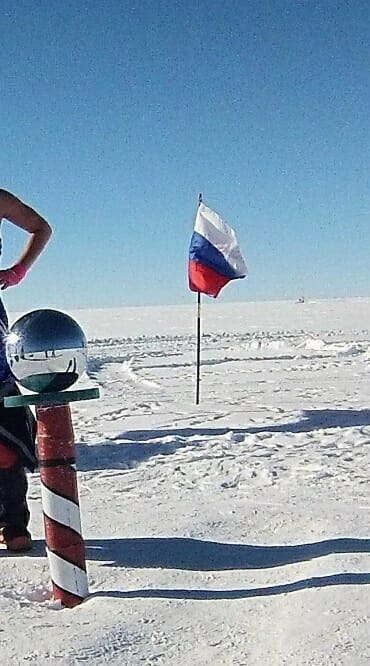
Tell us about your adventure of a lifetime…
This is a challenging 1000km trek through remote, freezing terrain from the Ronne-Filchner Ice Shelf on the edge of the frozen Antarctic continent at 82⁰20 South, to the Geographic South Pole at 90⁰ South.
The trip meant pulling an 80kg pulk in one of the most inhospitable environments of the world; uphill all the way, climbing 11,000 feet (3350 m) with temperatures below –40°C plus severe wind chill and storms.
I was active 12 hours a day for 46 days, while also suffering from a severe case of ‘Polar Thigh’ which got steadily worse from Day Seven. I had to have the physical ability to cover a minimum daily distance and the mental stamina to continue in extreme conditions when exhausted and in great pain. I believe the Polar Thigh made this extreme trip twice as hard and don’t think I could have continued for one more day.
What was your motivation?
I believe in ‘living life to the full’. Making the most of my time and having no regrets on my death bed with a ‘bucket list’ of things to do before I die. Also known as a ‘living life to the full list’. One day I wrote down a list of things to do: ‘South Pole / North Pole?’. Three years later, I felt like taking part in a big challenge… researching the North and South Pole trips I was drawn to the South Pole. Possibly because of the ‘romantic’ expedition history and lure of Antarctica.
What was your most and least favourite thing about the adventure?
I enjoyed eating what I liked for ten months before in an effort to put a few lbs on. This extra fat would soon come off and would protect me from the cold! I also loved the surreal and awesome experience that was just being on Antarctica. A frozen continent, with no time zone, no passport control, no nationality or currency and 1000s and 1000’s miles of ice and snow, two miles deep in places. Although people think it may have been just white and boring, I would describe it as beautiful, with stunning variations of snow, snowflakes and ice formations.
What memories will you take away from the experience?
I will never forget such an impactful experience – from the big stuff such as actually arriving at the South Pole, to the small stuff such as counting out six toilet sheets per day and the squeak of the ski poles constantly plunging in and out of the snow! A reunion is planned with my four team mates every year at the Scott Statue on the Mall.
Was there ever a point where you or somebody else on the trip thought they couldn’t complete it, if so – what got you through that?
On Day 7, I was told I had Polar Thigh and the doctors talked about medevacking me out. On days 8 and 9, I had no energy and no motivation. Losing my sense of purpose and assuming that the ski plane would just come and pick me up. On the evening of Day 9, I realised that I was made of much stronger stuff, and questioned why everyone was assuming I was going to quit? Deciding to crack on I found my mojo again. I made it for another 35 days even though my legs were in agony, especially for the last 10 days. I used all my inner resources to see each day through – mantras, visualising finishing, music, short steps for survival… sheer determination and grit to the end.
What type of training was required and how far in advance?
I trained for ten months for the trip. Previously breaking my Achilles tendon which meant I had to recover and have physio for that first. On the year of the trip, I started training on January 2nd with my first ever tyre pull for 0.6 mile in 12 minutes. By the end of the training, I was pulling two tyres for 12 miles. I also travelled to Norway twice to train in free-heel skiing and pulling the pulk. Plus, general weights, core and aerobic fitness.
What piece of advice would you give to somebody looking to take on a challenge like this?
Do it. It’s possible – we are all more capable and amazing than we realise.

